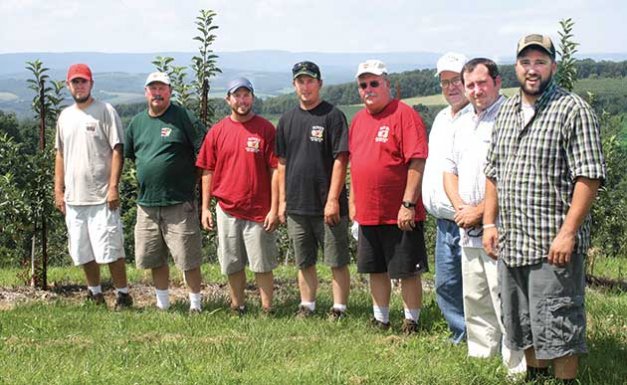
Men of the Boyer family pose atop Chestnut Ridge. From left, they are Ben, Bruce, Sam, Wesley, Matt, Dan, Seth, and Mark. by Richard Lehnert
In Pennsylvania, almost all the apples grow in Adams County.
But 90 miles west, there’s a ridge—Chestnut Ridge—where fruit trees, mostly apples but also peaches, pears, and cherries, grow as densely as anywhere in the country. About five miles long and a mile wide, the ridge is wall-to-wall trees and is dominated by the orchard operations of three brothers—Dan, Matt, and Bruce Boyer—and their wives, and five sons, and their wives, and young children in another generation.
The Boyers, Dan and Matt, are well known in the fruit production world. They travel and learn, and practice what they learn. Dan, 59, is on the board of the International Fruit Tree Association. Not surprisingly, the Boyers’ orchards were a destination on the IFTA’s summer conference pretour. Visitors came to their farms in Bedford County on their way the summer conference, which centered around Gettysburg and Adams County two hours away.
Chestnut Ridge runs north and south, so Dan Boyer and his family get the morning sun on the east side of the ridge, and Matt and Bruce and their families get the afternoon sun. “I don’t think it makes much difference,” Dan said. Depends on whether you like beautiful sunrises or beautiful sunsets, Matt says, adding that his place on the sunset side takes a little longer to warm up in the spring.
Matt and Bruce both earned horticulture degrees from Pennsylvania State University and, in 1989, bought Boyer Orchards from their parents. Their father, Allan, was fully employed as a steel worker, Matt said, and Allan and his sons ran the orchard, which he started in 1957, as a side business.
In 1976, Dan, the oldest of the three brothers, had gone to work for a neighboring orchardist and four years later bought that farm, naming it Ridgetop Orchards.
“Chestnut Ridge got its name from the American chestnut,” Dan said. “They say the ridge was once snow white with chestnut blossoms.”
In 1916, chestnut blight struck in the United States, killing millions of giant trees that dominated the forests of the eastern United States. By 1930, only stumps were left, some of which still put out sprouts that are doomed to die later. No one has yet found a cure for the disease, or a resistant American chestnut strain.
Gradually, the transition to fruit, mostly apples, converted Chestnut Ridge.
Both farms have been expanding. Dan and his wife Lois have expanded the acreage at Ridgetop from the original 140 acres at Ridgetop Orchards to 450 and this year created a limited liability company, an LLC, to take into ownership their two sons, Seth, 34, and Mark, 25.
Boyer Orchards has grown to more than 300 acres, including some land rented from other orchard owners. The Boyers are the major orchard operators on Chestnut Ridge.
Matt and Bruce have also done extensive transition work to bring in their sons. Matt and Ellen are parents to Wesley, 32, and Sam, 26. Bruce and Janet are parents to Ben, 23.
Ridgetop
Both of the orchard enterprises are mainly wholesale operations, but each does some retail.
Dan and Lois at Ridgetop have a packing house where they pack apples under the Ridgetop name, and sales are made through brokers. They retail about 5 percent of the crop.
They also operate a pick-your-own sweet cherry operation. Seth said they plan to start a retail store in nearby Fishertown. “It’s not very handy for people to trek through the mud to come to the packing house for apples,” he said.
That is also part of their plan to double their cold storage capacity to 200,000 bushels and extend their packing season. Now, what they can’t store or pack and sell during the harvest season goes to Hess Brothers Fruit in Leola, Pennsylvania. They are also members of Knouse Foods, which take their off-grade apples and also some varieties they grow for processing.
“We grow fifteen varieties,” Dan said. These span the season from Paulared and Ginger Gold early to Rome Beauty, Fuji, Cameo, and Pink Lady late, with McIntosh, Honeycrisp, Jonagold, Jonathan, Cortland, Stayman, York, Golden Delicious and lots of Red Delicious in between.
Red Delicious apples sell very well in the Caribbean and Central America, Dan said, where red apples are good Christmas gifts. Both Boyer operations grow Red Delicious as their major variety, and Matt said they planted 4,000 trees of the variety last year.
Like many eastern growers, they have been shifting from processing varieties to fresh market ones. “We still need to spread our varieties at harvest,” Seth said. “We have 50 acres of Honeycrisp, and they and McIntosh and Gala all come at the same time. We also need a good late variety, and we’re trying Pink Lady and Aztec Fuji.”
Visitors at Ridgetop saw a new orchard, “Seth’s orchard,” which sits on virgin ground planted in 2009. The Brookfield Galas were planted on a 4- by 13-foot spacing on M.9 rootstock. Visitors couldn’t believe the size and growth of the trees.
Pennsylvania growers in general are having some trouble using the tall spindle system that was developed in New York and is spreading to other areas, especially Michigan. In Pennsylvania, a combination of strong soils, 36 to 48 inches of annual rainfall, and a long growing season has made it hard to contain trees in small spaces. Add to that the need to install trellis on mountainous terrain.
Seth described the “unusual” gravel loam soil in his namesake orchard. “It has both good drainage and good water-holding capacity,” he said. “We never irrigate—never have to—and the top is covered with a gravel mulch.” The soil needs potash, but never needs more than 30 pounds per acre of nitrogen, he said.
Boyer Orchards
Matt, who is 56, and Bruce, 53, have worked together on the farm since childhood and bought Boyer Orchards from their parents in 1989. It now has more than 250 acres in production, mostly of apples but also three varieties of peaches and two of pears.
Of the five adult men involved in Boyer Orchards, Matt, Wesley, and Bruce are most involved in orchard production work, while Sam and Ben work with crews of migrant workers. Both of them speak Spanish.
About 10 percent of their production is sold through their farm market, which is run by Matt’s wife, Ellen, and Bruce’s wife, Janet.
Unlike Ridgetop, Boyer Orchards packs no fruit. All of it is sold at harvest to Hess Brothers Fruit in Lancaster County.
Last year, Boyer Orchards made some big decisions on how to transfer the farm to the next generation.
“We divided our business in two,” Matt said. He and Bruce own a new entity called Boyer Lands LLC, which owns all the orchard land and nothing else. Boyer Orchards owns equipment, and each year the three sons—Wesley, Sam, and Ben—will gain 2 percent ownership in Boyer Orchards. “It will take them eight or nine years to get half interest,” Matt said. By then, Bruce and Matt will begin selling shares in Boyer Lands to their sons. “That my and Bruce’s retirement plan,” Matt said.
One incentive to do it was provided by Pennsylvania law, which allows for family farm real estate transfers without paying the 2 percent transfer tax. Otherwise, shifting the property deeds to Boyer Lands would have been an expensive proposition.
Penn State supporters
All the Boyer men were educated at Pennsylvania State University. They are great supporters of Penn State and its horticultural research and extension programs. “We collaborate a lot with Penn State,” Matt said.
But the Boyers also like the fruit schools Cornell University holds each year, and Matt thinks Cornell’s NEWA program “is just the nicest thing that ever helped a fruit grower.”
NEWA is short for Network for Environmental and Weather Applications. Weather data from local weather stations is used in predictive models to tell growers about insect development and disease conditions.
“It takes the guesswork out of when to spray, and it works in our food safety assurance program,” Matt said. “It’s proof of why we did what we did.”
Boyer Orchards paid $1,500 this year to buy a weather station and put it near Sam’s home.
“We were the first in Pennsylvania to have it,” Matt said. The station is connected to the network by wireless communication.
At Ridgetop, Mark Boyer also uses the information to make spray decisions, accessing it on smartphone in the orchard. Of course, the information is also available on desktop computer.
To participate in the program, either individual growers—or the state they live in—must pay Cornell $5,000 a year. Pennsylvania chose to do that for its growers. Cornell will only allow growers to participate if they have data loggers that are calibrated to provide accurate weather data.
Tech aims to turn burn piles into profits for tree fruit growers
Can new technology help growers get paid for climate-smart practices?
WSU to hold Ravenholt symposium on sustainable wine production May 9–10
Washington State University’s Viticulture and Enology department will host a two-day symposium on sustainable wine production, new technologies and climate resilience...
USApple to host season-end webinar May 14
The U.S. Apple Association will host a webinar May 14 to take a rearview-mirror look at the 2023–24 apple season...
Underground watering spreads across vineyards
Grower agreements help Washington State University professor scale up subsurface irrigation method.

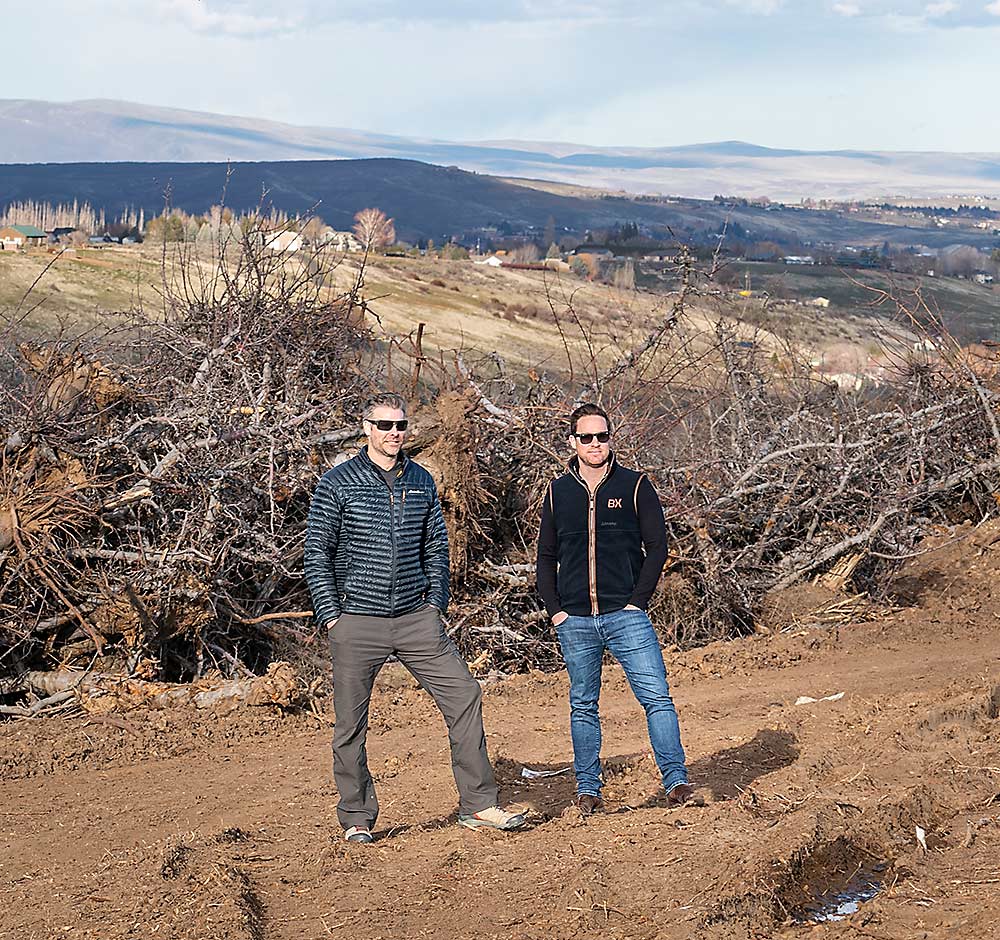
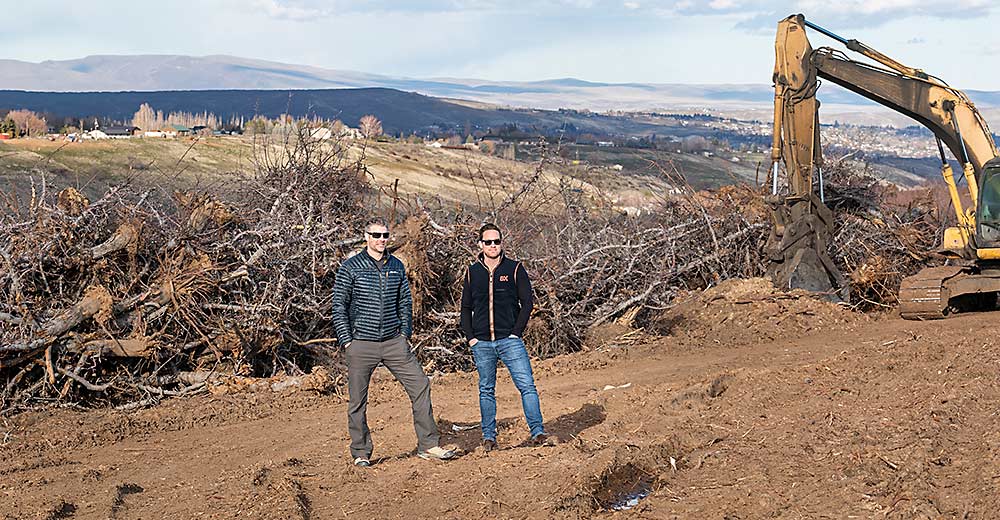


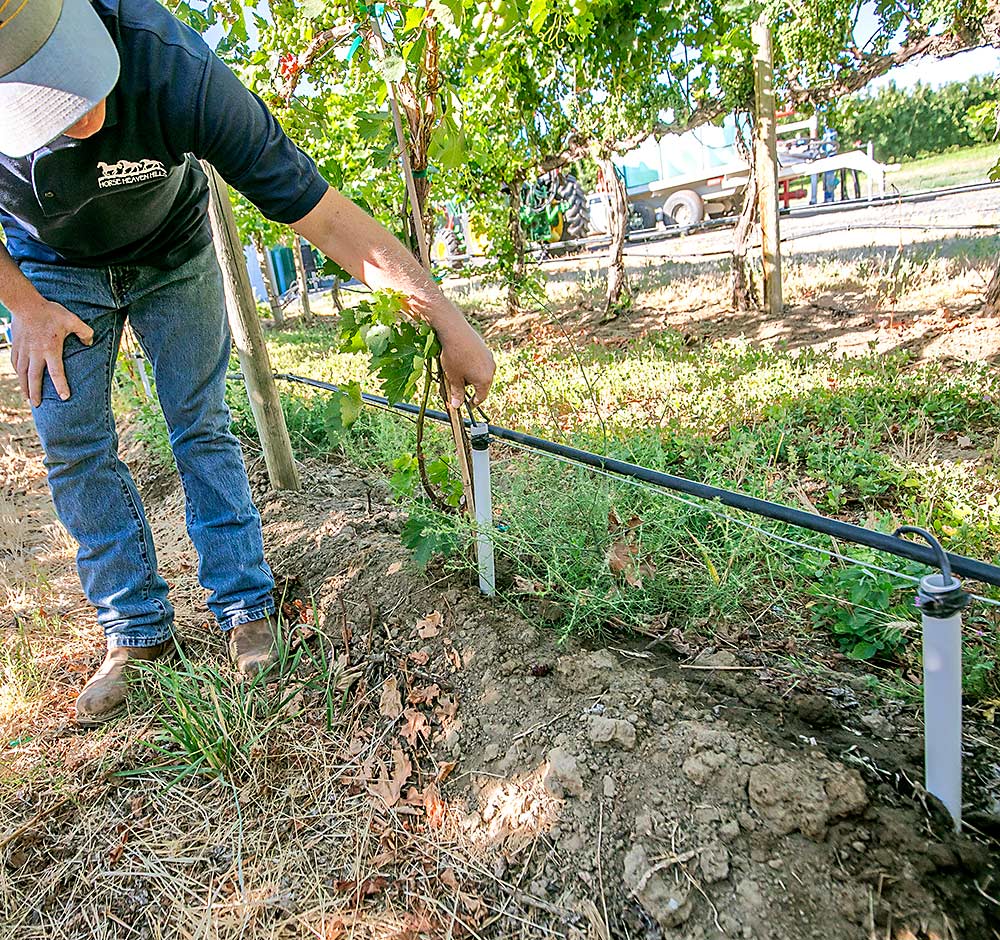
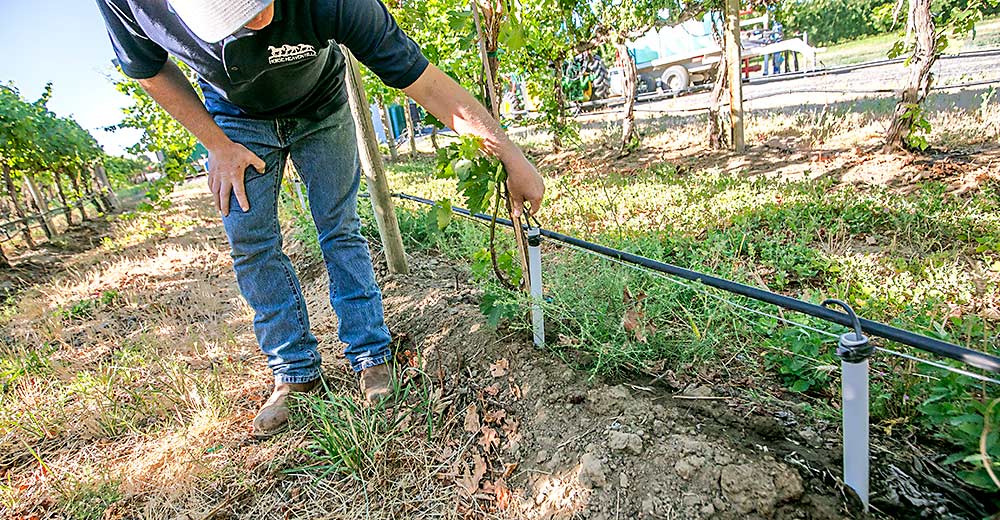





Leave A Comment